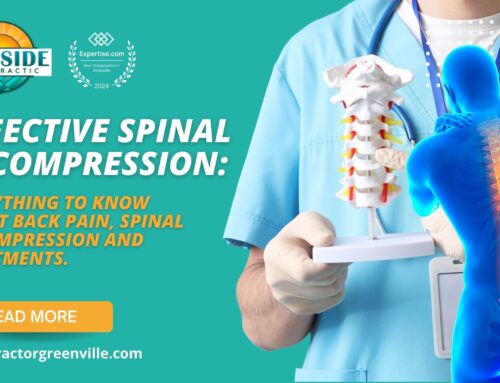 You may have been told by your medical doctor that you have Sacroiliac Joint Pain. Sacroiliac Joint (SI) pain? What’s that? Well, let’s talk about this pain syndrome and what the sacroiliac joint does.
You may have been told by your medical doctor that you have Sacroiliac Joint Pain. Sacroiliac Joint (SI) pain? What’s that? Well, let’s talk about this pain syndrome and what the sacroiliac joint does.
The sacroiliac joint, or “SI” joints (you’ve got on on each side of your body) are what connect your spinal column to your pelvis. SI joints move in several different ways but just not very much. SI joint dysfunction is actually a separate condition from low back pain; however, SI joint dysfunction is a very common cause of back pain in both adults and children.
What Causes SI Joint Pain?
There are two common reasons why people experience SI joint pain.
1. Sudden onset from trauma, awkward lifting, slipping or sudden unexpected movements.
2. Gradual onset from faulty posture aggravated by your job or habits.
How Do I Know If I Have SI Joint Pain?
A diagnosis of sacroiliac joint pain can only be made by a qualified healthcare professional. That being said, some common questions your healthcare professional may ask are:
What is the location and intensity of your pain?
Has the pain spread to other parts of your body (thigh, buttocks, leg, foot, etc.?)
Does the pain cause you to limp?
Does it hurt to get up out of your chair, or roll over in bed?
 There are a number of diagnostic tests which are performed with a goal of determining whether the sacroiliac joint is the source of the pain. A medical diagnostic test for SI joint pain involves injections into the SI joints. Needless to say, the test itself can be a painful experience.
There are a number of diagnostic tests which are performed with a goal of determining whether the sacroiliac joint is the source of the pain. A medical diagnostic test for SI joint pain involves injections into the SI joints. Needless to say, the test itself can be a painful experience.
If both of my SI joints are doing the same work every day, why does one hurt and not the other?
If you haven’t suffered from an injury, and the pain eases when you are lying down and not moving, a postural imbalance might be contributing to your condition. There may be an imbalance in your feet, or your legs may be unequal in length just enough to cause stress on your SI joints.
How can Eastside Chiropractic help?
Depending upon your diagnosis, my job is to reduce your pain and restore normal function to your sacroiliac joints. Some of my common treatments for sacroiliac joint pain which may be appropriate for your case are:
Manipulation (adjustment) of the SI joints to return them to normal function. We perform adjustment with a computerized instrument which allows me a distinct advantage in accuracy and comfort.
Exercise to build muscle strength and joint stability.
Stabilizing orthotics (custom shoe inserts) to help restore foot stability, compensate for leg length inequality and absorb damaging heel strike shock.
The speed of recovery will of course vary from person to person, but in over 50% of the cases I treat, relief can be felt within the first 2 weeks of care!
This blog post is of course only for general information and not a substitute for professional care. If you would like to find out whether Eastside Chiropractic can help your pain, call Mandy or Colin at 864-292-6777 and mention this article.
Learn more about Eastside Chiropractic, PA!
See what some of our Greenville chiropractic care patients have to say about our chiropractic services, or click here to read more of our chiropractor Greenville SC reviews from Google, Yelp and Facebook.

